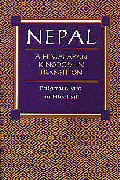Locked within rugged mountain ranges, Nepal was cut off from most of the world for centuries. It was in the mid-1950s that Nepal took its first concrete steps towards development, and in this book the authors describe the growth and change that have occurred in this Himalayan kingdom from that time until the present.
Emphasizing Nepal’s land-locked situation, the authors point to the particular development challenges posed by a small, resource-poor, mountainous and land-locked country. The discussion covers geographical aspects (envirnoment and natural resources, land use, forests, agriculture), the human dimension (human resources, cultural patterns, demography and urbanization), and issues related to industrial development, communications, and tourism. The concluding chapters take up three specific development challenges Nepal faces: (1) sustainability and conservation, (2) poverty alleviation, and (3) population planning.
Nepal is presently experiencing a period of major changes in its economy, society, and environment. This book sheds light on some of the most crucial issues facing the Kingdom as it continues its development efforts, and, in addition, offers insight to scholars and planners interested in the development of other small, land-locked countries.
Authors
